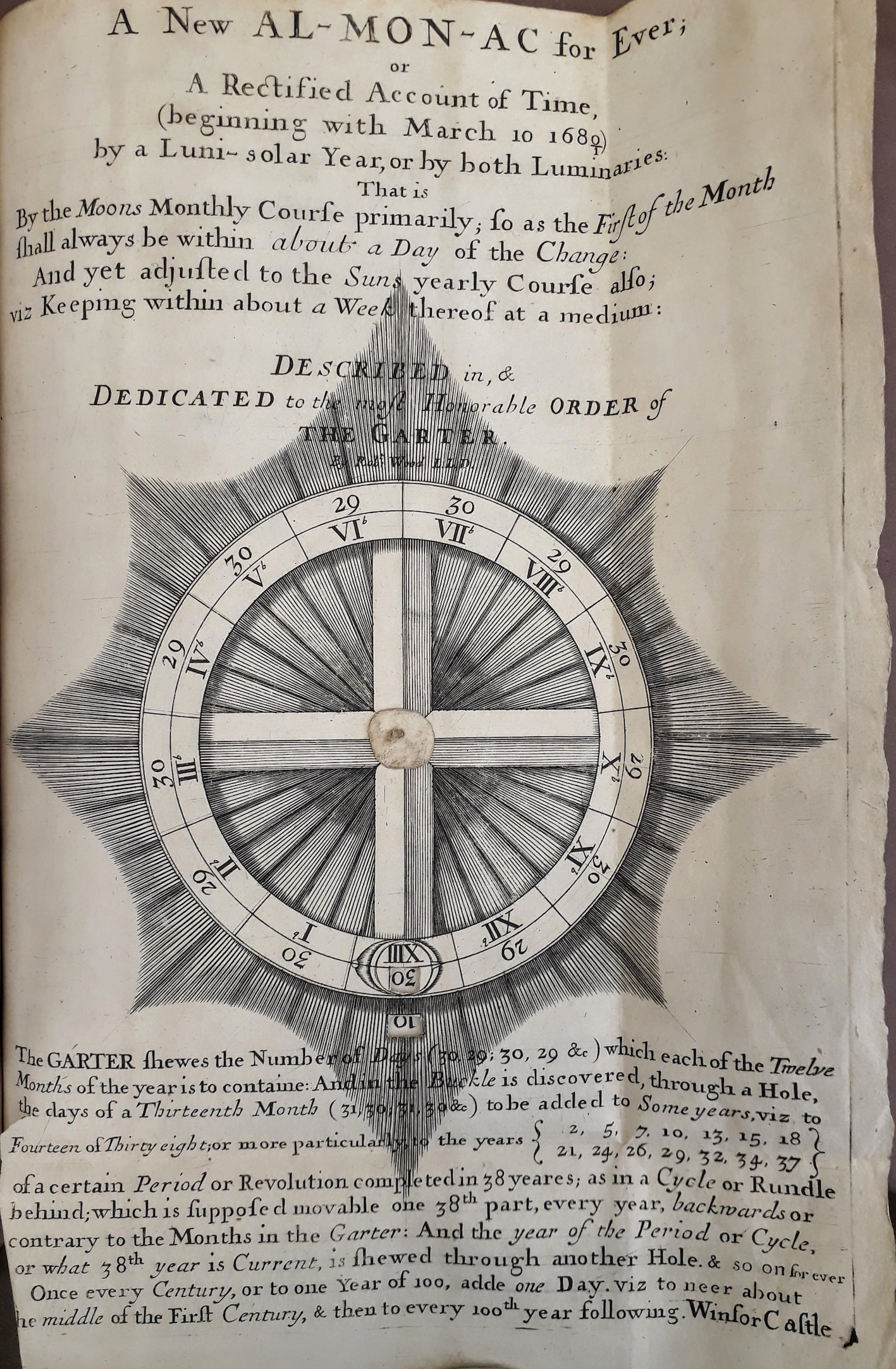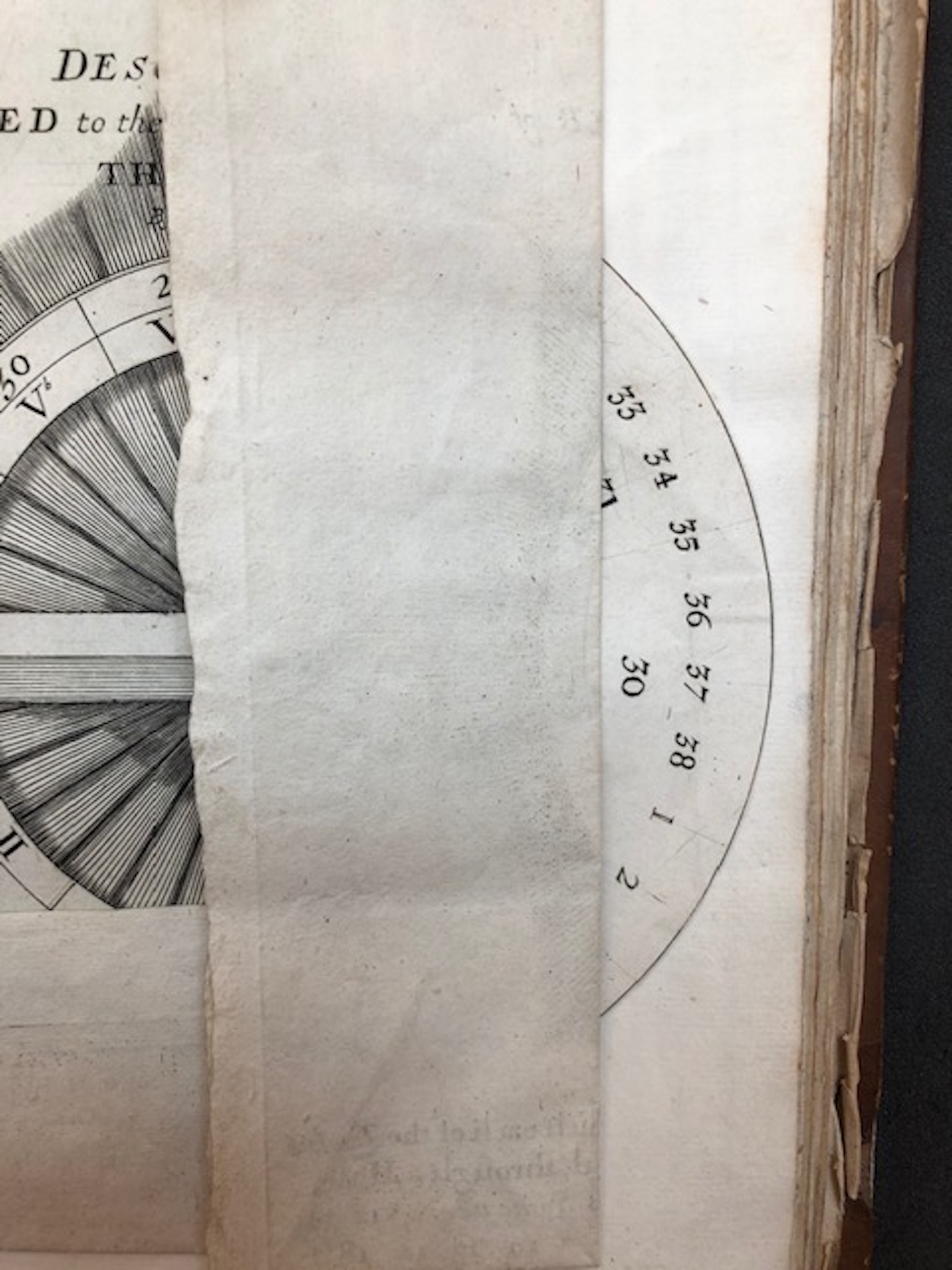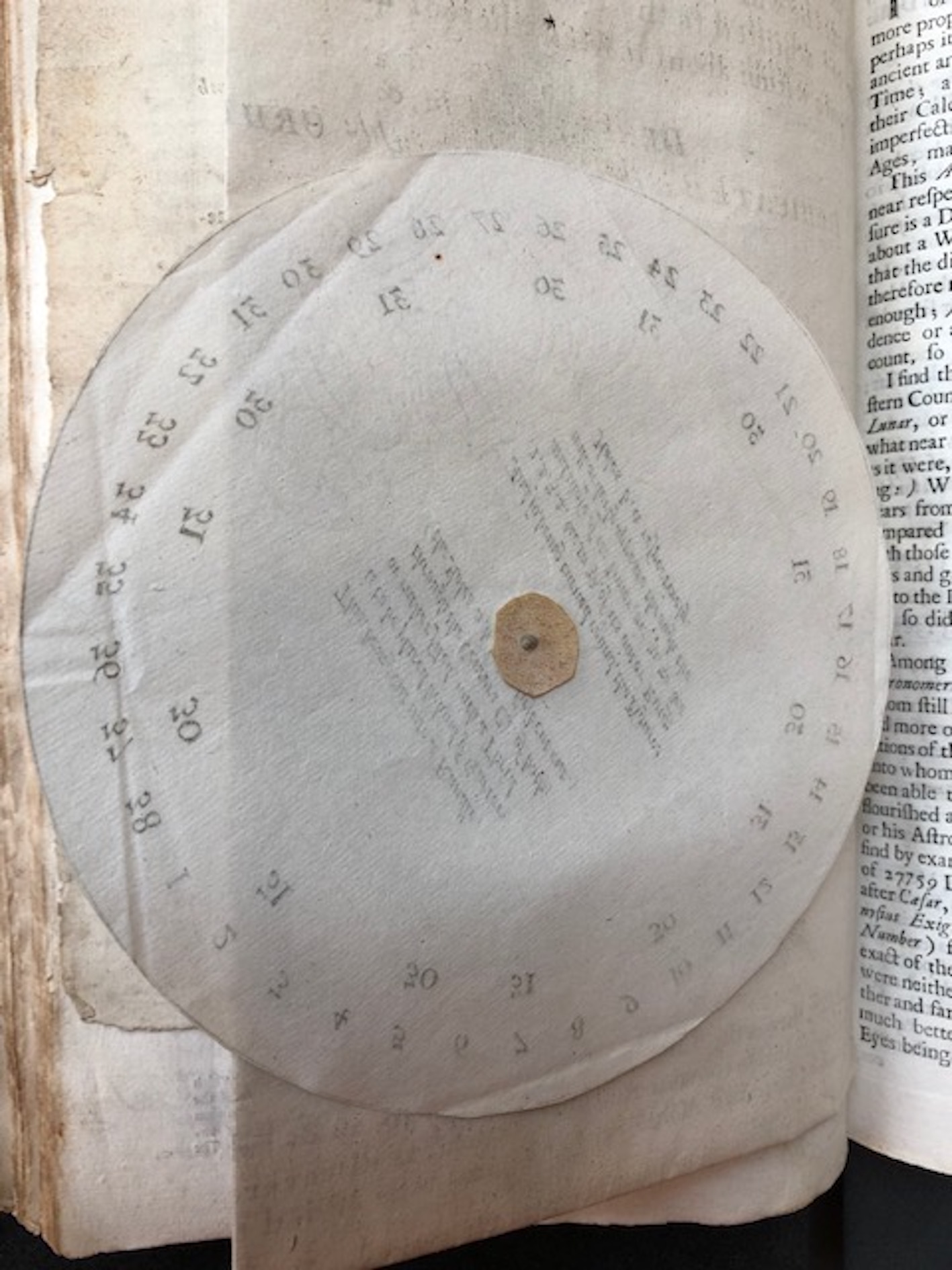John Aubrey, FRS, the author of Brief Lives, whose antiquarian study of Stonehenge has been recently on show in the Bodleian’s Proscholium, was a polymath with a special interest in mathematics.
In the 1690s he presented a large collection of his manuscripts, books, and objects to the Ashmolean Museum. He was fascinated, not only by the past, but by innovation. His manuscripts are full of details of new scientific advances, and the whereabouts of maps, scientific and navigational instruments, models, new publications, prospect drawings, and illustrations.
Here is something from his collection: Robert Wood’s A New Al-Mon-Ac for Ever (1681), now at the Bodleian Libraries, Ashm F 4 (31).

To calculate the correct date, according to Wood’s new calendar, the reader looks at the buckle of the Order of the Garter, through which ‘is discovered, through a Hole’, figures on a dial attached to the back of the paper. These give the ‘days of a thirteenth Month’ which must be added. Instructions printed on the dial tell the user that, ‘This, being cut into a Rundle, is to be placed behind the Garter; or rather filed with a Thrid through the Centers’, after a hole is cut for the purpose. Aubrey has followed these instructions to make his calculator.


Wood’s The Times Mended, an account of his new system, was published in 1681. He begins with a brief history of time from the Egyptians, and says that he set himself the task of calculating time, ‘not inferior to the exactness of any Astronomical Observations’, but in a simple way which anybody could use. In his system, the first day of every month would be within a day of the change of the moon, while, by another system of compensations, shown on the dial at the back of the diagram, the length of the year should be kept within a week of the period of rotation round the sun. Wood’s system is dedicated to the order of the Garter: as he says, the ‘Egyptian Hieroglyphick of the Year was a Serpent curv’d into a Circle or Ring, with Tail in Mouth, but the Emblematical Garter will be much more proper for England.’
Wood was an acquaintance of Aubrey’s from their time as members of the republican Rota Club. Wood had translated William Oughtred’s Clavis Mathematica and had also been mathematical master at Christ’s hospital. He clearly had not lost his touch: he claims that he had ‘made a Youth of twelve years old’ understand and remember his new system in an hour. Aubrey was deeply interested in innovative methods for mathematical education, and wrote a treatise, An Idea of Young Gentlemen, on the subject. Mathematics and mathematical instruments, including paper ones like this, are also a strong feature of his Brief Lives, on which Aubrey was working in 1680-1. The Lives include some details which Wood told him in conversation, such as what Robert Boyle was like at school.
